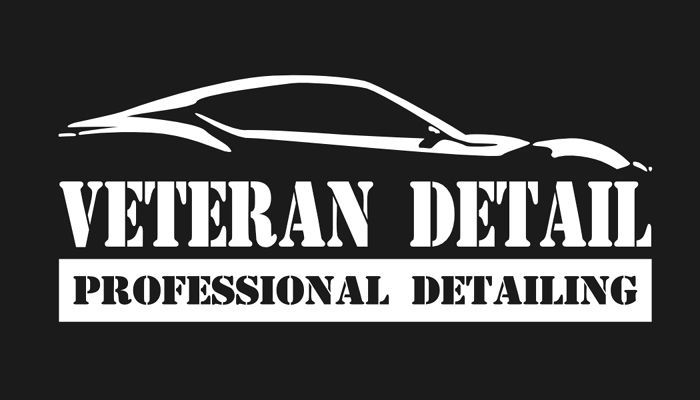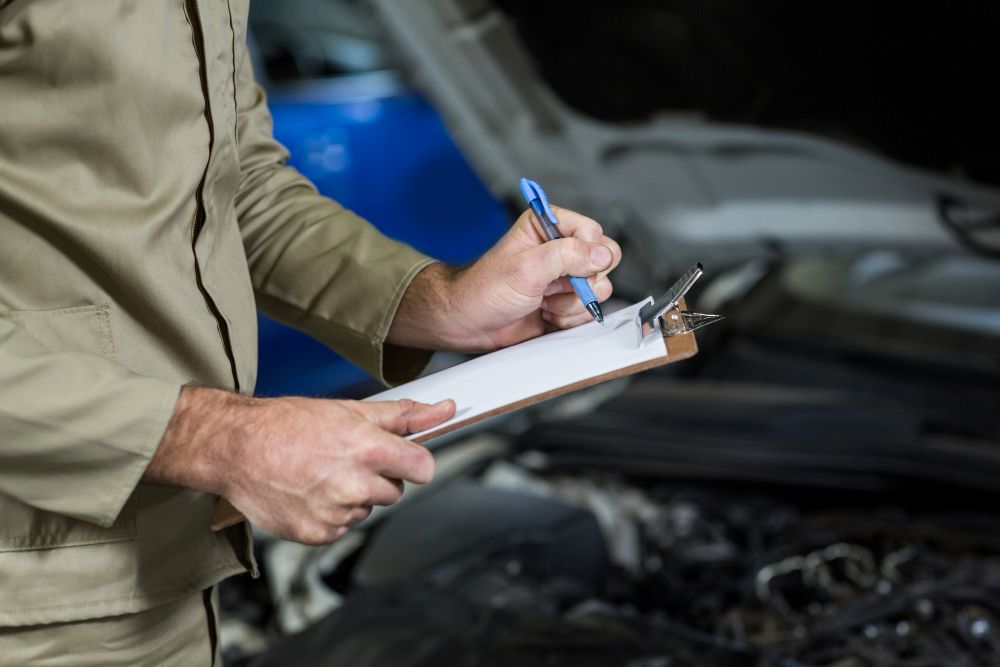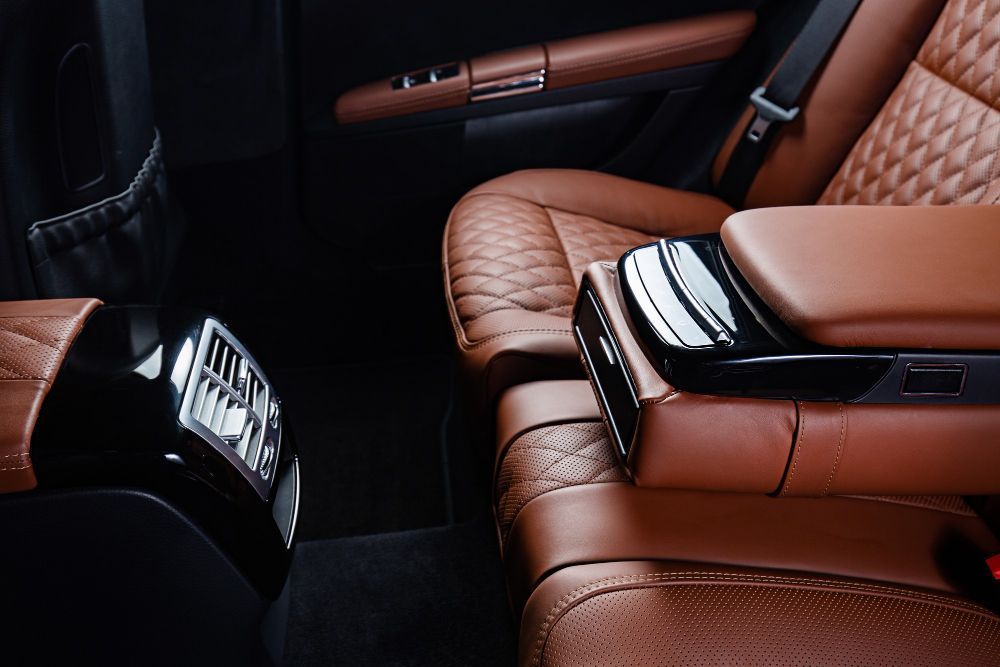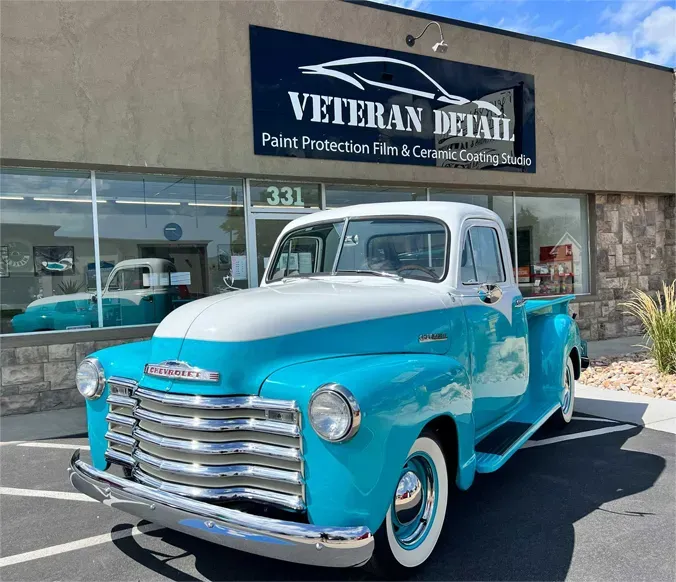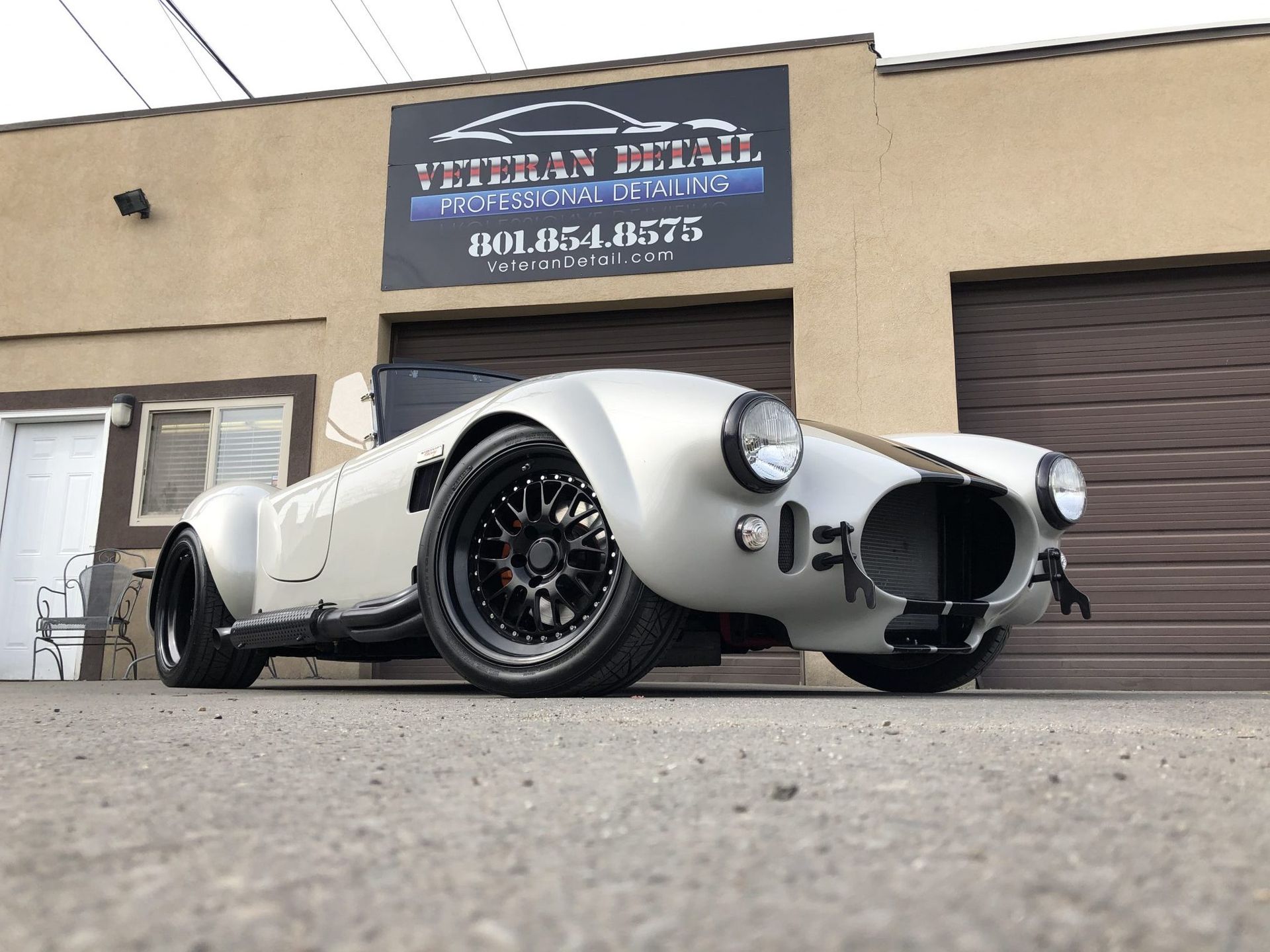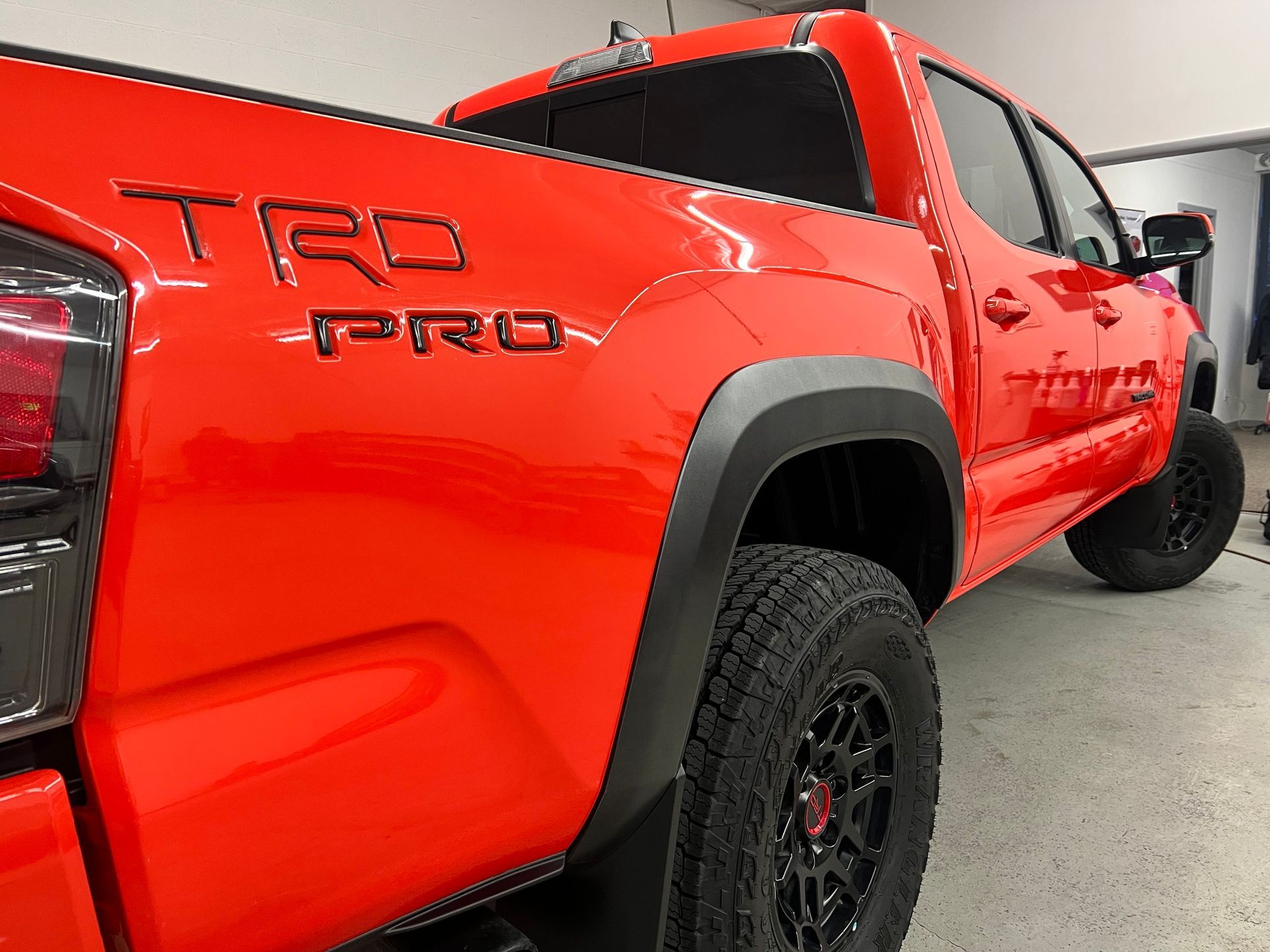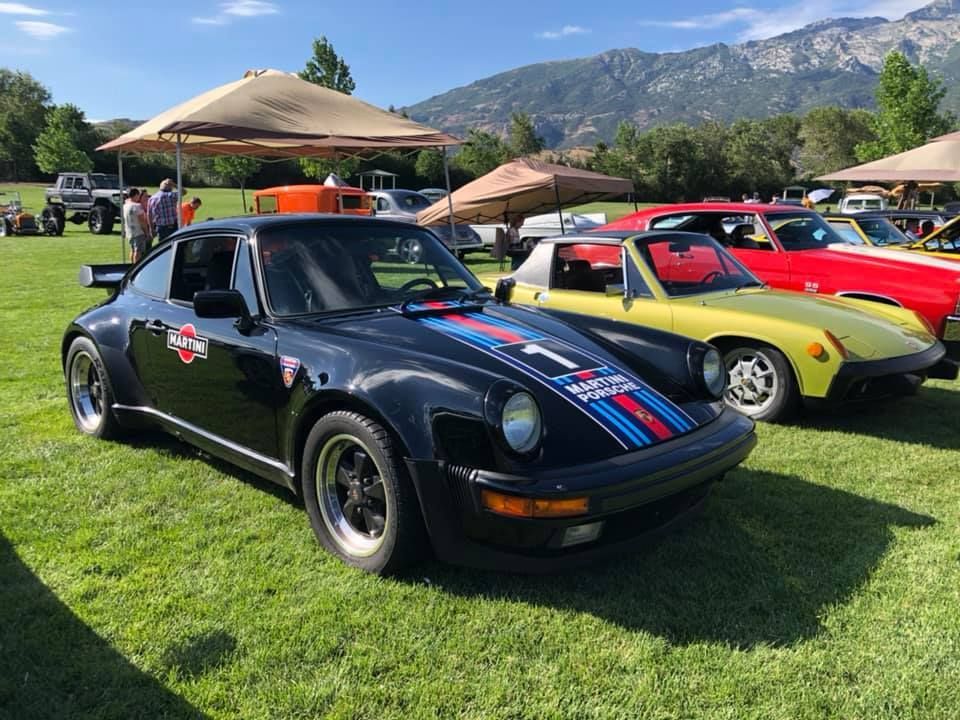How to maintain your ceramic coating after installation
If you’ve just had a ceramic coating installed on your car, congratulations — you’ve made one of the smartest investments in paint protection. In Alpine and Highland, where mountain weather, UV exposure, and road debris can take a toll on your finish, ceramic coatings act as a long-lasting shield against the elements.
But here’s the truth most drivers don’t realize: ceramic coatings aren’t “install and forget.” To perform at their best — and look their best — they need the right maintenance routine. The good news? It’s simple when you know what to do.
This guide breaks down how to care for your coating, how often to clean, and what mistakes to avoid so your car stays glossy, slick, and protected for years.

Why ceramic coating maintenance matters
Ceramic coatings create a durable, semi-permanent layer that bonds with your vehicle’s paint. This layer is hydrophobic — meaning it repels water, dirt, and road grime. But just like any protective surface, it needs upkeep to stay effective.
Think of it like skincare: if you apply sunscreen but never wash your face or moisturize, the protection weakens over time. The same applies to coatings. Dust, pollen, and hard water deposits can clog the surface and reduce hydrophobic performance if left alone.
Proper maintenance keeps the coating “breathing” and helps it self-clean the way it’s meant to. Especially in Alpine and Highland, where daily driving often means dust from canyon roads or snowmelt residue, staying consistent is everything.
The first 7 days after installation
Your coating is still curing during this window, so how you treat it now affects how long it lasts.
Here’s what to do — and what not to do:
Do
- Keep the vehicle
dry for the first 24 hours.
- If it gets dusty, use a clean microfiber towel to lightly remove surface dust.
- Park indoors or under shade whenever possible.
- Drive only when necessary during the first 48 hours to avoid contamination.
Don’t
- Don’t wash the car within the first 7 days.
- Don’t apply wax, sealant, or quick detail sprays.
- Don’t let bird droppings or sap sit — rinse them off gently with clean water.
After that first week, your coating will have fully bonded and be ready for its normal wash routine.
How to wash a ceramic-coated car
Washing is the most important part of maintenance. Done right, it keeps the coating slick, shiny, and hydrophobic. Done wrong, it can leave swirl marks or break down the protection layer.
Follow these steps for safe, coating-friendly washes:
1. Use the two-bucket method
One bucket for your soap solution, one for rinse water. This prevents dirt from recirculating back onto the paint.
2. Choose the right products
Use a pH-neutral shampoo specifically formulated for coated vehicles. Harsh soaps or degreasers strip protective layers and reduce water beading.
3. Wash in the shade
Utah’s sun can dry soap and minerals fast, leaving water spots. Always wash early morning, late evening, or under cover.
4. Use soft tools
Opt for plush microfiber mitts and drying towels. Never use sponges or brushes that can scratch the surface.
5. Rinse thoroughly and dry completely
Water left behind can create mineral spots — Alpine and Highland both have hard water, so use filtered or deionized water if possible.
6. Boost with a topper every few months
A ceramic-safe spray topper refreshes the coating’s slickness and hydrophobic behavior. Apply every 3–4 months for optimal results.
Seasonal care tips for Alpine and Highland drivers
The mountains bring beauty — and plenty of maintenance challenges. Adjust your ceramic care by season for the best protection.
Winter
- Rinse regularly to remove road salt and slush.
- Apply a ceramic booster before winter begins for an extra hydrophobic layer.
- Keep your undercarriage clean to prevent corrosion from salt spray.
Spring
- Do a full decontamination wash to remove pollen and leftover winter grime.
- Check for water-spot buildup and treat it early with a mild remover.
Summer
- Wash weekly during dry, dusty months to prevent dust embedding into the coating.
- Avoid washing in direct sunlight — heat bakes minerals into the finish.
Fall
- Remove leaf stains promptly. Organic matter can etch into the coating if ignored.
- Apply a topper or maintenance spray before the first cold snap to prep for winter.
Common mistakes that shorten coating life
Even the strongest coatings can lose performance if treated carelessly. Avoid these common pitfalls:
- Automatic car washes: Brushes and recycled water create swirl marks that dull the gloss.
- Waxing over the coating: Unnecessary and can interfere with hydrophobic performance.
- Letting water spots sit: Minerals in Alpine’s water can etch if left unaddressed.
- Using dish soap or degreasers: These strip protective layers and dry out the coating.
- Skipping washes: Dust, pollen, and brake dust can clog the surface and reduce slickness.
Small habits make the biggest difference. Consistent care beats occasional correction.
FAQs
- How often should I wash my ceramic-coated car?
Every two weeks is ideal. More often if you drive through dust, rain, or snow. - Do I need to reapply the coating?
High-quality ceramic coatings last years with proper maintenance. You don’t reapply — you maintain and occasionally refresh with toppers. - Can I take my coated car through a touchless wash?
Occasionally, yes. Touchless washes are safer than brush types, but avoid frequent use since the chemicals can be strong. - What’s the best way to dry after washing?
Use a clean, high-pile microfiber towel or a car dryer. Never let water air dry on coated paint in Alpine’s mineral-heavy water. - Should I use quick detailers?
Only use ceramic-safe sprays labeled as “coating maintenance” products. Regular detailers may contain waxes that interfere with performance.
Conclusion
A ceramic coating makes caring for your vehicle easier — but it still needs a little attention to perform at its best. Consistent, gentle washing and seasonal maintenance are all it takes to keep your coating looking like day one.
In Alpine and Highland, where elevation, sun, and water quality can challenge any finish, following the right care habits will keep your car shining beautifully for years.
